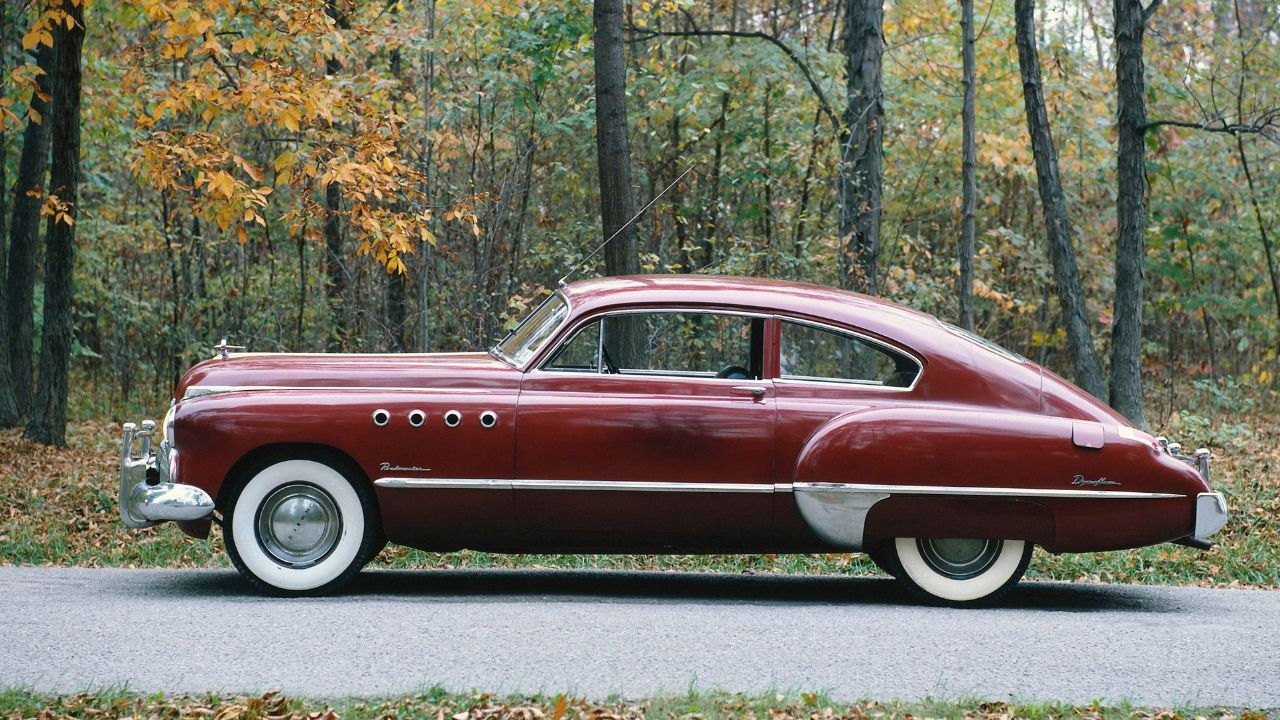
When you think of the cars of 1971, you probably think of the Dodge Charger. The 1971 Dodge Charger was redesigned with a 115-inch wheelbase, six coupes and three hardtop series, and a more spacious interior than the Ford Torino or Chevy Chevelle. Basic models came in slant six and 318ci engines. You could also choose the Hemi option. The SE and 500 trims were now known as the SE and 500. They included additional features such as extra sound insulation, a three-speed manual transmission, a carpeted trunk and wood-grain polymer.
Chrysler's 1971 cars had tilt wheels and automatic headlights.
By 1971, the Chrysler lineup consisted of four-door sedans, two-door hardtops, and wagons. Every car in the line had a sleek fuselage and the C body architecture. Other improvements included increased rear footroom or automatic headlights. Many models were equipped with tilt steering and automatic headlights. Chrysler began to offer automatic transmissions for cars, making it easier to drive.

Chrysler's 1971 cars were equipped with automatic temperature control
Late in 1967, the Chrysler Imperial was the first car to get automatic temperature control. This was the first model in its class to feature this feature. However, it was also available on all models. It was also standard equipment on the Ford Thunderbird. In the 1970s, even less expensive cars were offered with automatic climate control. This feature was found in the best cars of that era, and the sidebar below lists some of the most popular models.
Ford's 1971 Mustang Mach 1 had a part-throttle downshift
Mustang Mach I released a unique feature. Ford tested part-throttle Downshifting while racing on the track. Part-throttle shifting is an option in the car's sixspeed transmission that allows you to accelerate when you are upshifting. The Mustang GT doesn't have this feature, but it was added to Mach 1
Dodge's 1971 cars had a modified power steering system for better road feel
In 1971, the company introduced a new body style called the Charger. This car was based on the Coronet from 1970 but sales were disappointing. It was a four-door sedan with only the 318 or 6 engines. The Dodge Coronet was retired and the Charger replaced it, a four door sedan and wagon. The popularity of the Charger grew after its redesign for the 1971 model year.
1971 GM cars featured Torsion-Quiet Ride
In 1971, GM introduced the Torsion-Quiet Ride system. It was designed for leaf springs to be isolated from the subframe, which reduces noise, vibration, rigidity, and stiffness. However, it had many drawbacks when cornering. Mopar expert Rick Ehrenberg recommends retrofitting early suspension parts to improve performance and reduce noise. What are the Torsion Quiet Ride benefits?

Ford's 1971 Mustang Mach 1 had a new 360 engine
The 1971 Ford Mustang Mach 1 sports car was the Mustang Mach 1. It was the first production car of the Mustang Mach 1 and won SCCA Manufacturer's Road Rally Championship. It was replaced by the Mustang GT, and featured a 360 engine. During its production, the Ford Mustang Mach 1 won more than one major race, including the North American Rally Championship. It also won many awards for performance, including "Best of Show" honour.
FAQ
What's the difference between a mechanic and an automotive technician?
They are both similar, but not identical. Both a mechanic and an automotive technician can repair cars.
A mechanic should be able to do simple tasks quickly and have good manual dexterity. They should also be able correctly diagnose and repair any problems.
A technician in automotive is more technical than a mechanic. They need to be able use tools such drills and wrenches, and read blueprints.
They should also be capable of safely performing complex procedures. They must also be familiar with different types of engines and electrical systems.
They must also be capable of understanding how parts interact.
The result is that a mechanic often earns less than an auto technician. Both careers have many options.
How do I fix my vehicle as a hobby?
Take up a hobby in car repair if you have an interest. You could learn how to repair them, buy parts for them, sell them or just enjoy them. It would make a great pastime if you're looking for something different to do.
It's difficult to make this a fulltime job. It requires hard work and dedication. Also, you will need to put a lot of money into it.
So unless you have a good reason for wanting to get involved with cars, then it might be best to leave it alone.
Does it really matter what college I choose?
No, not really. There is no difference in the programs offered by colleges for getting into automotive work. However, some schools offer better programs than others so if you're looking for something more specialized, look elsewhere.
Is automotive mechanic a promising career?
Automotive is an exciting industry filled with opportunities for people who are committed to excellence. It is important to work hard and learn as much from others as you can in order to succeed in this industry.
Excellent communication skills are essential as you will spend most of the time speaking to customers or other employees. You must also be willing and able to travel long distances, which can make it difficult to commute.
If you're interested in pursuing a career in automotive, consider taking classes at community colleges and universities. Many schools offer programs for students who are interested to learn about auto sales, customer service, or repair.
Mechanical engineering should be your first choice for a degree. It's possible to get a bachelor's degree in just four years.
Many companies will also hire graduates right out of school. So it's wise to start looking for employment while you still have the chance to study part-time.
After you've finished your education, it's likely that you'll need to go through some training before you can be hired as an auto technician.
This means that you must pass the Automotive Service Excellence exam. This test covers topics like engine maintenance, brakes system, suspension, and many other subjects.
After passing the ASE test you can apply for a National Institute for Automotive Service Excellence (NIASE) license.
You can repair vehicles owned by private citizens with a license. You'll be paid based upon the number of services provided.
It is important to remember that not all states require licensing. However, if you plan to work outside your home state, you'll need to obtain a license.
Some states don't issue licenses until after completing a certain amount of training. If this is you, you may need another option.
Is it easy to get a job as an automotive mechanic?
It can be done. Many garages advertise their vacancies online, and many people apply just because they think it might be fun. Try applying to a few jobs and seeing if the garages accept student applications. If you don't know anyone working in the industry, ask your friends and relatives. They might be happy to recommend someone.
How long does it take you to become a great mechanic?
A mechanic is only an expert if they have years of experience. You can learn the most effective way to fix cars by learning from a professional mechanic.
You will have to spend time in a garage learning about cars and mechanics. It is important to get familiar with the mechanics of cars and engineering.
Additionally, you will need to attend an auto school.
It's important to start early. Do not wait to learn automotive technology. You can get certified as a mechanic by getting started right away!
Statistics
- There were 749,900 jobs available for automotive service technicians and mechanics in 2016, which is expected to grow by six percent through 2026. (jobhero.com)
- The U.S. Bureau of Labor Statistics (BLS) reports that the job outlook for automotive service technicians and mechanics is expected to decline by 4% from 2019 to 2029. (indeed.com)
- According to the BLS, the median annual salary for automotive service technicians and mechanics in the United States was $44,050 in May 2020. (uti.edu)
External Links
How To
How to become an Automotive Technician
An automotive technician is responsible for vehicle maintenance and repair. He/she works at automotive shops, garages or service centers. He/she assists customers in fixing their cars, trucks or motorcycles. An automotive technician must be capable of diagnosing problems and making repairs safely, accurately and efficiently.
An associate degree from a vocational school is required for anyone who wishes to become an automotive technician. After completing this program the student must pass the National Institute for Automotive Service Excellence exam (ASE). ASE stands to American Society of Mechanical Engineers. There are two parts to the ASE certification exam. The first section tests for mechanical knowledge, the second for practical skills. To take the test, you must visit one of the approved testing locations. These locations are available online or through your local automotive dealer.
Before becoming an automotive technician, a candidate must pass the test. It varies depending on the location of the applicant. For example, some states require candidates to attend a training course, while others allow them to study independently. In addition, some states license technicians immediately after they receive their license, while others wait until they have completed at least six months of employment as an automotive technician.
To become an automotive technician, one must apply at a local dealership. Once hired, most new employees start out working as apprentices. Apprenticeship programs typically last three to four years. The apprenticeship program teaches students how to change oil, adjust brakes, replace tires, clean spark plugs, inspect engine compartments, and perform routine maintenance. Advanced repairs can be done by some students, including replacing shocks, installing air filters and repairing engines. Schools offer classes during business hours. However, some schools offer evening classes if needed.
When a student has completed his/her apprenticeship, they become a journeyman. Journeymen generally spend four- to five decades learning how to fix major systems like transmissions. You will also learn how to repair complicated electrical components, as well as how to remanufacture engines and rebuild transmissions. Many employers prefer hiring journeymen because they know the job well and understand what the customer expects.
Candidates who pass the required exams are eligible for a license. The Bureau of Labor Statistics estimates that there were nearly 1.7 million jobs available for automotive mechanics in 2010. This figure is expected to rise 18 percent between 2009-2020. If a candidate decides to open his/her own shop, he/she should prepare to invest many thousands of dollars in equipment and supplies.
Automotive technicians' salaries depend on many factors such as the employer, whereabouts, education level and experience. On average, a jobless person could expect to earn $20,000 annually. Someone with only a high school diploma could earn around $21,000 per year. A bachelor's degree is equivalent to approximately $24,000 annually. Technicians with bachelor's degrees earned about $27,000 per year. Master's degree holders make around $32,000 annually. Salary increases are common so professionals who make less than $30,000 a year could realistically expect to earn $40,000 over the next few years.